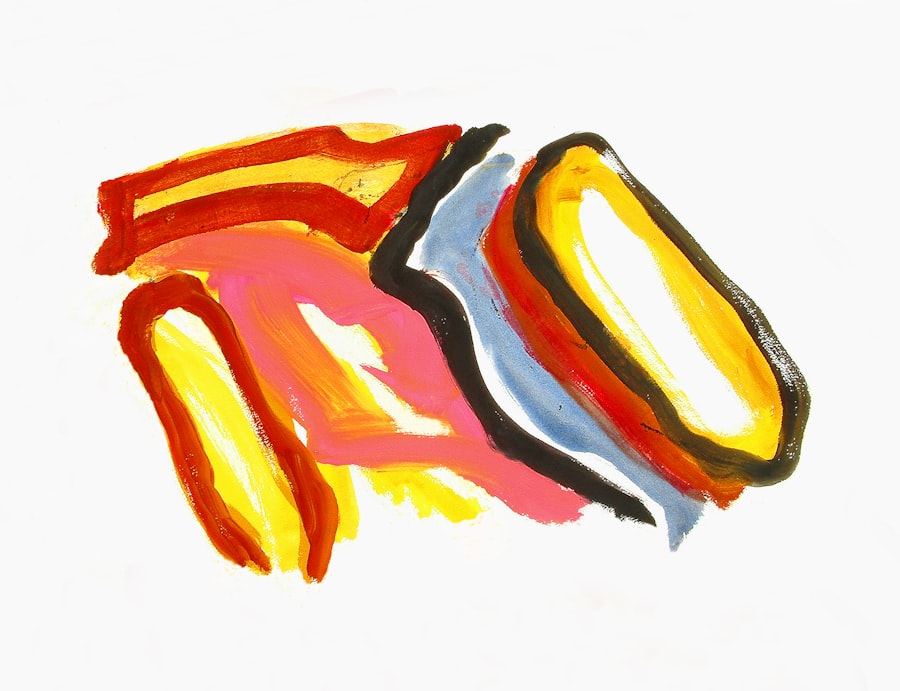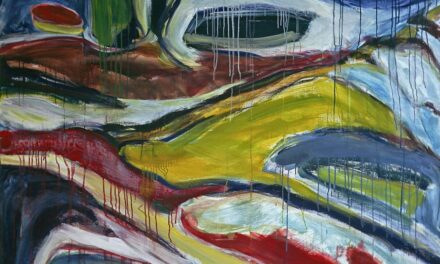Piet Mondrian was born on 7 March 1872 in Amersfoort, Netherlands. He was the second child of his parents, and his father served as a headmaster at a local primary school. Mondrian’s early life was marked by tragedy, as his father died when he was merely eight years old.
Despite this loss, Mondrian demonstrated an early aptitude for art and commenced drawing lessons at the age of 14. He subsequently studied at the Rijksakademie van beeldende kunsten in Amsterdam, where he was exposed to a variety of artistic styles and movements. Mondrian’s education was significantly influenced by the work of the Dutch landscape painter, Jan Toorop, who introduced him to the principles of pointillism and symbolism.
This exposure to diverse artistic techniques and styles would have a profound impact on Mondrian’s later work. Upon completing his studies, Mondrian relocated to Paris in 1911, where he became involved in the avant-garde art scene and began to develop his own distinctive style.
Summary
- Piet Mondrian was born in the Netherlands in 1872 and studied at the Academy of Fine Arts in Amsterdam.
- Mondrian was influenced by the work of Vincent van Gogh and the Cubist movement, which inspired him to develop his unique abstract style.
- His style evolved from early naturalistic landscapes to geometric abstract compositions, characterised by primary colours and straight lines.
- Mondrian was a key figure in the De Stijl movement, which aimed to create a universal visual language through abstract art and design.
- Mondrian’s impact on modern art can be seen in his influence on minimalism, geometric abstraction, and the use of primary colours in art and design.
Artistic Influences
Early Inspirations
One of the most significant influences on Mondrian’s work was the Cubist movement, which was pioneered by artists such as Pablo Picasso and Georges Braque. The Cubists sought to depict objects from multiple perspectives simultaneously, breaking them down into geometric shapes and forms.
The Impact of Cubism
This approach had a profound impact on Mondrian, who began to experiment with similar techniques in his own work. He was fascinated by the way the Cubists fragmented objects into geometric shapes, and he started to incorporate these elements into his paintings.
Abstract Inspirations
Another important influence on Mondrian’s artistic development was the work of the Russian painter Wassily Kandinsky. Kandinsky was a pioneer of abstract art and believed that colour and form could be used to express spiritual truths. His ideas resonated with Mondrian, who began to explore the use of colour and form as a means of expressing universal truths and principles.
Evolution of Style

Mondrian’s early work was heavily influenced by the natural landscapes of his native Netherlands, with an emphasis on traditional techniques and subject matter. However, his move to Paris in 1911 marked a turning point in his artistic development. Inspired by the avant-garde art scene in the city, Mondrian began to experiment with new techniques and styles, moving away from representational art towards abstraction.
One of the key developments in Mondrian’s style was his use of geometric shapes and forms to represent the underlying structure of the world. He believed that by reducing objects to their essential forms, he could reveal the universal principles that governed all of creation. This approach led to the development of his iconic grid paintings, which featured a series of horizontal and vertical lines intersecting at right angles.
These works sought to capture the harmony and balance of the natural world through a simplified and abstract visual language. As Mondrian’s style continued to evolve, he began to explore the use of primary colours as a means of expressing universal truths. He believed that by using pure colours in their most basic form, he could create a visual language that transcended cultural and linguistic barriers.
This approach would become a hallmark of Mondrian’s later work and would have a profound impact on the development of modern art.
The De Stijl Movement
In 1917, Mondrian co-founded the De Stijl movement with fellow artist Theo van Doesburg. De Stijl, which means “The Style” in Dutch, was a radical artistic movement that sought to create a new visual language based on pure abstraction and simplicity. The movement rejected traditional artistic conventions and sought to create a universal aesthetic that could be applied to all aspects of life, from architecture to furniture design.
One of the key principles of De Stijl was the use of geometric forms and primary colours to create a sense of harmony and order. Mondrian’s grid paintings became emblematic of the movement, serving as a visual representation of its ideals. De Stijl also sought to create a sense of unity between different art forms, with artists working collaboratively to create a cohesive visual language that could be applied across disciplines.
The impact of De Stijl was far-reaching, influencing not only the visual arts but also architecture, design, and even urban planning. The movement’s emphasis on simplicity and order had a profound impact on modernist architecture, with its principles being applied to buildings and urban spaces around the world. De Stijl’s legacy can still be seen today in the clean lines and geometric forms that define much of modern design.
Mondrian’s Impact on Modern Art
Mondrian’s influence on modern art cannot be overstated. His pioneering use of geometric abstraction and primary colours had a profound impact on the development of modernist art movements such as Constructivism, Suprematism, and Bauhaus. His work also had a significant impact on American abstract expressionism, with artists such as Jackson Pollock and Mark Rothko citing Mondrian as a major influence.
One of the key aspects of Mondrian’s impact on modern art was his emphasis on the spiritual and universal aspects of art. He believed that through abstraction and simplification, he could reveal the underlying harmony and order of the natural world. This approach resonated with artists around the world who were seeking new ways of expressing the modern experience.
Mondrian’s impact can also be seen in popular culture, with his iconic grid paintings being widely reproduced and referenced in everything from fashion to graphic design. His visual language has become synonymous with modernity and sophistication, serving as a touchstone for artists and designers seeking to create work that is both timeless and contemporary.
Legacy and Influence

The Universality of Mondrian’s Visual Language
One of the key aspects of Mondrian’s legacy is his ability to transcend cultural and linguistic barriers through his visual language. His use of geometric forms and primary colours creates a universal aesthetic that speaks to people across different backgrounds and experiences. This ability to create work that is both deeply personal and universally resonant is one of the hallmarks of Mondrian’s legacy.
Enduring Interest in Mondrian’s Life and Work
Mondrian’s influence can also be seen in the ongoing interest in his life and work. His paintings continue to be exhibited in museums around the world, with scholars and art enthusiasts seeking to understand the deeper meanings behind his iconic grid paintings.
Celebrating Mondrian’s Contributions
His legacy is also celebrated through events such as the annual Mondrian Day, which honours his contributions to modern art and design.
Key Works
Mondrian’s body of work is vast and varied, but there are several key works that stand out as emblematic of his artistic vision. One of his most iconic paintings is “Composition with Red, Blue, and Yellow” (1930), which features a grid of black lines intersecting with blocks of primary colours. This painting encapsulates Mondrian’s emphasis on simplicity and order, with each element carefully balanced to create a sense of harmony.
Another key work is “Broadway Boogie Woogie” (1942-43), which was inspired by Mondrian’s experiences living in New York City. This painting features a grid of coloured squares that evoke the rhythm and energy of the city streets. It represents a departure from Mondrian’s earlier work, incorporating more dynamic forms and colours while still retaining his signature sense of balance and order.
Mondrian’s “Victory Boogie Woogie” (1942-44) is another important work that showcases his evolving style in his later years. This painting features a grid of coloured squares that seem to pulsate with energy, reflecting Mondrian’s fascination with rhythm and movement. It remains unfinished at the time of his death but serves as a testament to his ongoing exploration of form and colour.
In conclusion, Piet Mondrian’s impact on modern art cannot be overstated. His pioneering use of geometric abstraction and primary colours has had a profound influence on artists and designers around the world. His legacy continues to inspire new generations of creatives seeking to create work that is both timeless and contemporary.
Through his iconic grid paintings and commitment to universal truths, Mondrian has left an indelible mark on the world of art and design.
If you are interested in learning more about the different art movements that influenced Piet Mondrian’s work, you should check out this article on Cubism. Cubism was a major influence on Mondrian’s early work, and understanding this movement can provide valuable insight into his artistic development.
FAQs
Who was Piet Mondrian?
Piet Mondrian was a Dutch painter and art theorist, known for being one of the pioneers of abstract art. He was born in 1872 and passed away in 1944.
What is Piet Mondrian known for?
Piet Mondrian is best known for his abstract paintings characterized by geometric shapes, particularly his use of straight lines and primary colors. He was a key figure in the development of the abstract art movement.
What influenced Piet Mondrian’s art?
Mondrian’s art was influenced by various movements, including Cubism and the De Stijl movement. He was also inspired by the natural world, particularly the landscape and the concept of harmony and balance.
What is the significance of Piet Mondrian’s art?
Mondrian’s art is significant for its contribution to the development of abstract art and its influence on modern design and architecture. His work has had a lasting impact on the art world and continues to be celebrated for its innovative approach to form and color.
Where can I see Piet Mondrian’s artwork?
Mondrian’s artwork can be found in major art museums and galleries around the world, including the Museum of Modern Art in New York, Tate Modern in London, and the Gemeentemuseum in The Hague, which houses the largest collection of Mondrian’s works.




